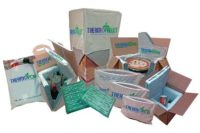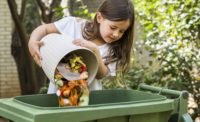Consumers today care increasingly about the environment, and they expect the products they buy to be produced in an environmentally responsible way. Milk is no exception. In fact, a study conducted for the Innovation Center for U.S. Dairy showed that frequent milk users are more engaged in environmental issues than less frequent milk consumers.
With new types of containers becoming available, milk processors need to base their evaluation of alternatives on sound science. They also need to bear in mind that packaging is just one step in producing safe, fresh milk and dairy products. In order to fully and accurately assess the environmental, social and economic impact of a container, a holistic view of processing plant operations is needed.
This holistic look should include an assessment of the greenhouse gas (GHG) emissions associated with all the stages of milk processing – including packaging as well as production, transportation, energy use and refrigeration of fluid milk. A new science-based tool is available to help plant managers do just that.
Measuring and benchmarking
The processing and distribution segment of the fluid milk value chain accounts for about 17% of GHG emissions, according to the “GHG Life Cycle Assessment (LCA) for Fluid Milk.” The study was commissioned by the Innovation Center for U.S. Dairy and completed by the University of Arkansas in 2010.
Using data from the LCA, a team of experts from the Innovation Center, milk processing plants, research universities, and government and nongovernment organizations worked together to create Dairy Plant Smart, a new tool for dairy business decision-makers available at USDairy.com/PlantSmart.
“The Dairy Plant Smart working group has worked well together over the last couple of years to first, better understand the science from our LCAs; and secondly, incorporate this new knowledge into tools that are useful to the industry,” said Darin Nutter, associate professor of mechanical engineering for the University of Arkansas. “I believe that better benchmarking is a key first step that leads to plants identifying major energy and GHG reduction opportunities that exist within their energy-using processes (e.g., electricity and heating fuel) and package systems.”
About 3.5% of fluid milk GHG emissions are attributed to packaging. Of that 3.5%, raw materials account for 65% of GHG emissions and 35% are from container formation.
In the packaging module of Dairy Plant Smart, users are asked the types of packaging they use and the annual volume. The GHG emissions of packaging vary based on the type — such as high-density polyethylene (HDPE), polyethylene terephthalate (PET) and paperboard packaging — as well as the size of the container — such as single-serve and gallon jugs.
Road map to mitigation
Once the entire carbon footprint of the plant is calculated, users can view case studies and additional resources to determine next steps for developing an energy reduction plan. In one case study, an Ohio plant invested less than $1,000 to modify a major system compressor and cut refrigeration energy use by 25%, thereby saving more than $100,000 per year.
In addition to reducing GHG emissions and lowering utility bills, energy-efficient practices can help milk processing plants improve system reliability, prevent maintenance and shutdown costs, increase productivity and introduce new revenue streams.
First and foremost, packaging needs to deliver food safely from the point of production to the point of consumption. With an eye on the evolving needs of consumers and a 360-degree view of energy use, ideal packaging can do so in an environmentally sound and economical way.




